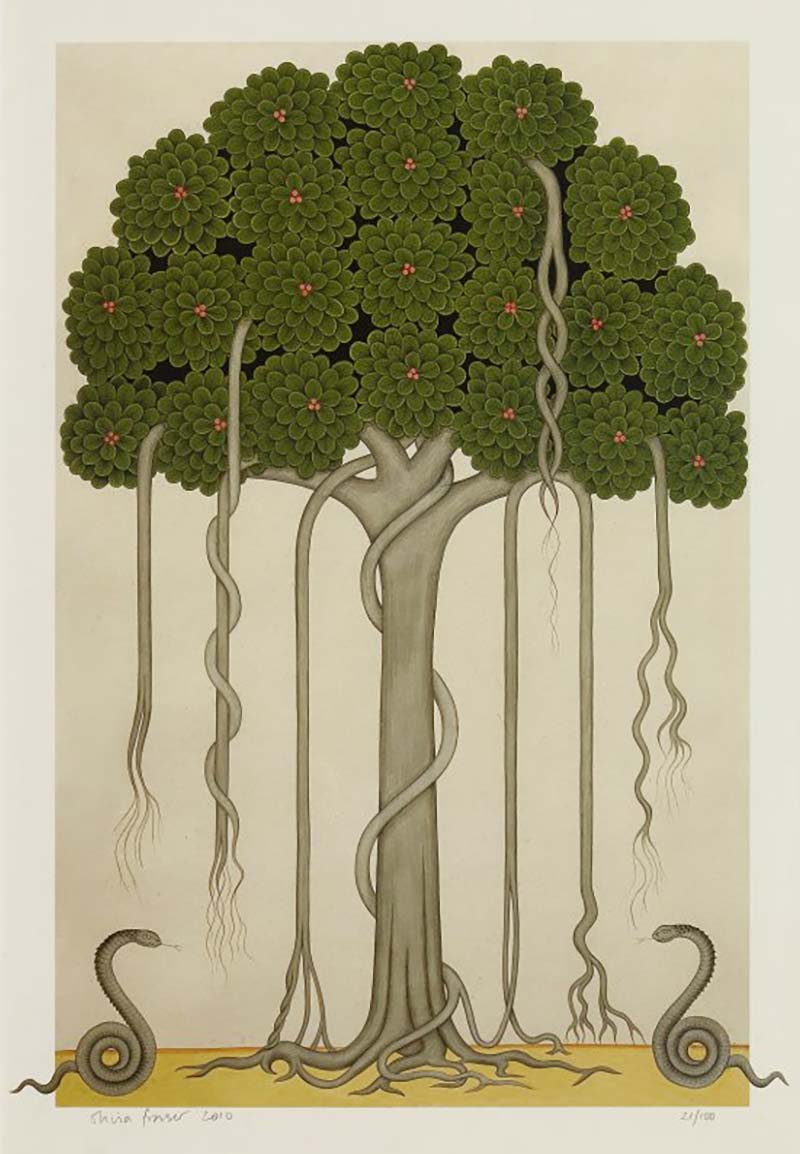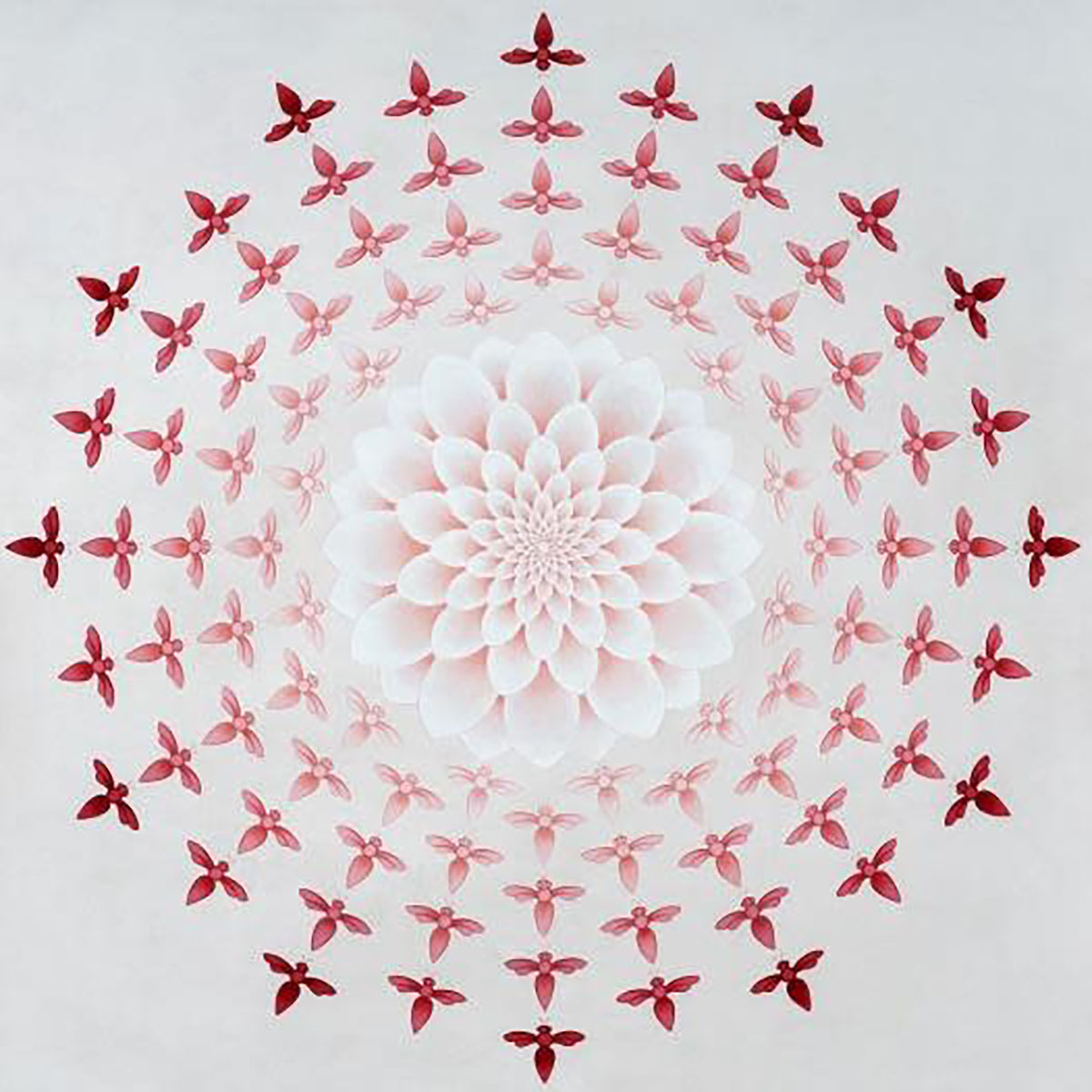ARTICLE
Olivia Fraser
Her practice is further informed by the pichwais of Nathdwara and the Jodhpuri paintings of Nath yogis, and aims to render traditional beliefs and notions in contemporary styles. Using Indian miniatures as a starting point, Fraser’s work depends on the isolation and repetition of motifs found in the backgrounds of miniatures, such as the lotus and bees, to create pattern-based optical illusions inspired by Tantric art. This is especially evident in her cosmic diagrams or mandalas. Her work is also influenced by Suprematism and Op Art. Throughout her practice, Fraser has worked with diverse materials from across the country, including chalk-based pigments from the Aravalli Hills and plant-based pigments such as indigo from southern India, using the pigments without mixing to create vibrant hues suggestive of the elements of nature.
She has also written and published a number of books, including a children’s book, Handmade in India (2006) and The Journey Within (2019), in addition to illustrating her husband William Dalrymple’s books, including City of Djinns (1993).
Fraser held her first solo exhibition in 1991 at Carma Galleries, New Delhi, and has subsequently shown her work at numerous group and solo shows, including Triveni Kala Sangam, New Delhi (2007); Grosvenor Gallery, London (2012, 2018); the Government Museum and Art Gallery, Chandigarh (2016); India Art Fair, New Delhi (2015–18); Nature Morte, New Delhi (2019); and Abu Dhabi Art (2019). Her work is held in private and public collections, including the Museum of Modern Art, New York.
At the time of writing, Fraser lives in New Delhi with her husband and three children. She also conducts workshops and teaches miniature painting in Jaipur.
Bibliography
Our website is currently undergoing maintenance and re-design, due to which we have had to take down some of our bibliographies. While these will be re-published shortly, you can request references for specific articles by writing to hellomapacademy@map-india.org.








